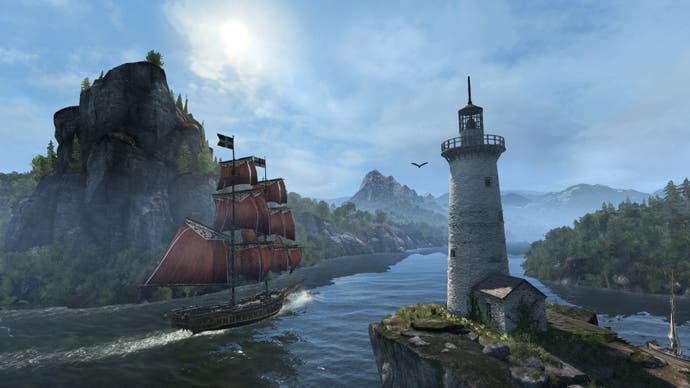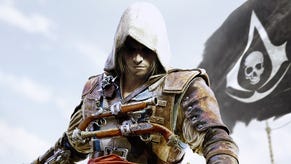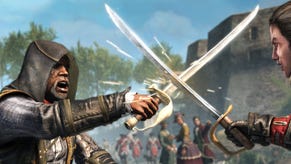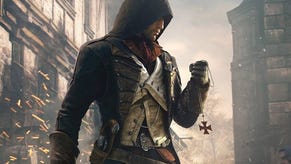Assassin's Creed: Rogue is more than the cash-grab it could have been
No need to Templar your enthusiasm.
Remember when people complained about Assassin's Creed releasing once every year? Yeah... The fact that Ubisoft is now launching two full-sized games from the same series on the same date is fairly ridiculous, but at least the company has not been too coy about its motives. Focusing just on Assassin's Creed: Unity would have excluded the large number of console owners still without a PlayStation 4 or Xbox One, Ubisoft has said, and more to the point would have excluded a large slice of the annual Assassin's Creed cash pie.
And so Rogue was born, specifically for fans still on PlayStation 3 and Xbox 360 (and next year, Ubisoft has just announced, on PC). If it sounds like something of a quick turnaround, it is - and playing it feels like a you're running through a greatest hits of recent gameplay systems. It's not difficult to spot where various pieces have been borrowed from - there's the fun naval gameplay from AC4, the reused New York city map from AC3, a few weapons from AC4's Freedom Cry DLC. Even elements from the series' old multiplayer mode have been included.
There's no attempt here to try and match Unity's fancy new-gen engine, refined control mechanics or co-op mode (in fact for the first time in years there is no multiplayer element at all). Rogue's main attractions are its characters and story. It feels like a similar situation to the hastily-made Assassin's Creed: Revelations, which gifted a third game to Renaissance hero Ezio so Ubisoft could keep working on the more technically advanced AC3 in the background. Revelations busied itself tying up loose plot threads and revisiting some fan-pleasing faces from earlier games - which is exactly what Rogue focuses on here to help wrap-up the recent Kenway saga.

Rogue's story is told through the eyes of Assassin-turned-Templar Shay Patrick Cormac (he's Irish, in case you didn't guess), who also provides a fresh viewpoint for the series' somewhat predictable good-versus-evil narrative. Cormac begins the game very much on the side of the Brotherhood, a happy Assassin with a ship and a purpose, but he's forced to change course after his part in a fairly major historical event (we won't spoil exactly what he gets up to, but it involves something that happened in Lisbon around the time period).
Cormac finds himself adrift from his cause - figuratively and literally - and washes up surrounded by a new set of friends who just happen to be Templars. Through his early exploits with them we see a benevolent side to the Templar's brand of control - expect to still be running around, renovating local businesses, chasing off local gangs and the like, but now to be doing it for the sake of restoring order rather than liberating people from it. It sort of makes sense - you're a Templar, but still surrounded by people who expect you to still behave nobly. And when you are tasked with fighting groups of Assassins, they are usually troublemakers who will jump you first.
It's still not an entirely smooth transition from one side to the other, but the lure of spending more time with some familiar faces makes Rogue an engrossing tale to watch unfold. Cormac is caught in a power struggle between Haytham and Achilles (Rogue being a prequel to their appearances in AC3). Each figure is a senior player in their respective Templar and Assassin orders, and both will push Cormac to take the ideology of each organisation to some of its furthest limits. One standout sequence sees you track down Adewale, AC4's faithful first mate and the main playable character in AC4's DLC - a mission which ends in a fairly surprising outcome. There's more Benjamin Franklin too, and the full story on how Achilles is left, Obi-Wan-style, one of the last of his number.
Adding Assassins as an enemy type adds some much-needed new ideas to the series' fighting mechanics. One mission sees you going to destroy an Assassin warehouse which is storing poison gas, something which may become a threat to the public. You now have to fight your way past Assassins that deploy some of the same tricks you used in the past - smoke bombs, for example, and the ability to hide in nearby shrubs. In some cases you'll need to clear an area of hidden Assassins using a detection radar and then listen out for whispers - a mechanic borrowed from the series' retired PVP mode. There's a land-based Hunter system now too, where continual notorious acts on your part cause Assassins to come after you.
New York remains a fairly uninspiring location to return to - there are some new areas, although a large part of the city appears the same as it was in AC3. It was fairly dull back then too, with few landmarks to recognise, but Ubisoft likely realises that the majority of players' time will be spent back out at sea. It's here that the game feels most fresh, especially out among the frozen wastes of the new North Atlantic map. Once again Ubisoft has provided an enormous space to explore, a vast ocean of islands and icebergs, shipwrecks and sea forts. Upgrade your ship and you will be able to carve routes through ice sheets and blast incoming icebergs faster than you can say Leonardo DiCaprio. And then there's a second map to sail around too, the North Atlantic River Basin, a mix of both land and sea where you can run around its islands, shoot a couple of beavers, swim back out to your ship and sail on.
If you've played Black Flag you'll know how many collectibles and upgrades you could spend countless hours searching for, if your patience so cares. Treasure maps, viking sword pieces, Templar armour and Native American totems are all there for the taking, alongside the usual array of Animus shards, viewpoints and chests. Winter-laiden wooden villages and icy cave outposts cover the map, and include miniature versions of settlements such as Halifax and Albany to run around and explore. Taking a leaf out of earlier Assassin's Creed games, each location also usually features buildings to renovate, which soon cause money to start flowing in.
One concern was that, despite the vast amount of map on offer to explore, the handful of story sequences I played were relatively short. One was just two missions in length, and the leaked Achievements list for the game suggests there may only be six sequences in all - around half the usual total. If the game's tale is as important to Rogue's appeal as I think it'll be, this could be a fairly major problem. But then we weren't able to try out any of the game's modern day sections - once again, there's a menu option to exit your Animus station and go wandering around fictional games developer Abstergo Entertainment.
Anyone without a new-gen console will be kept busy by Assassin's Creed: Rogue, that much is clear, and if the story lives up to our first impressions it may still be something worth exploring even for those who could venture into Unity's Paris instead. And anyone who simply wants another pirate simulator in the same vein as Black Flag - you're fine too. Rogue was born in a boardroom, but does its best to rise above its origins.










